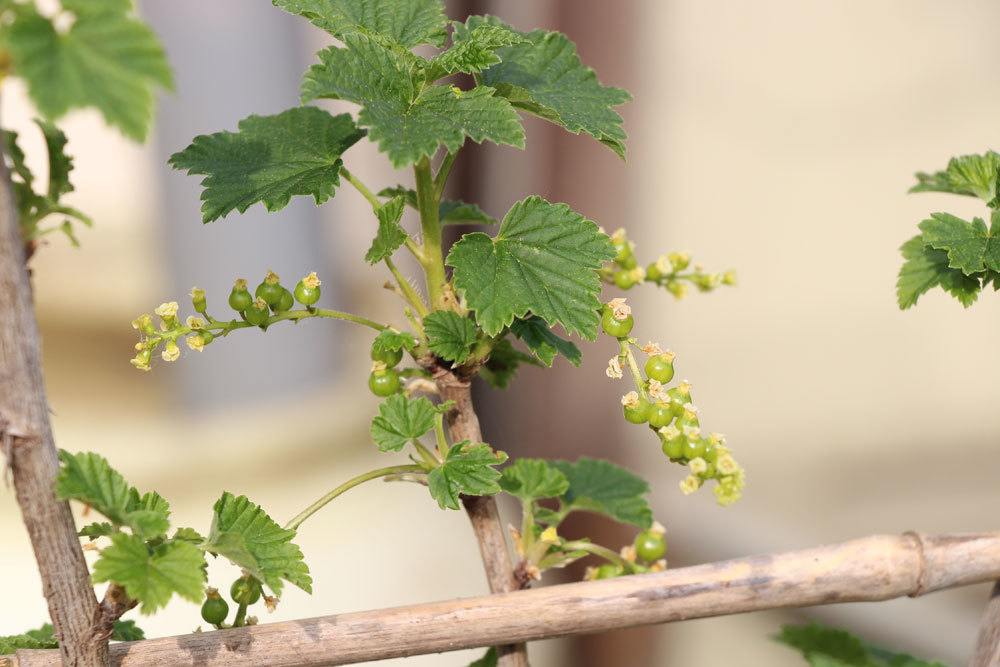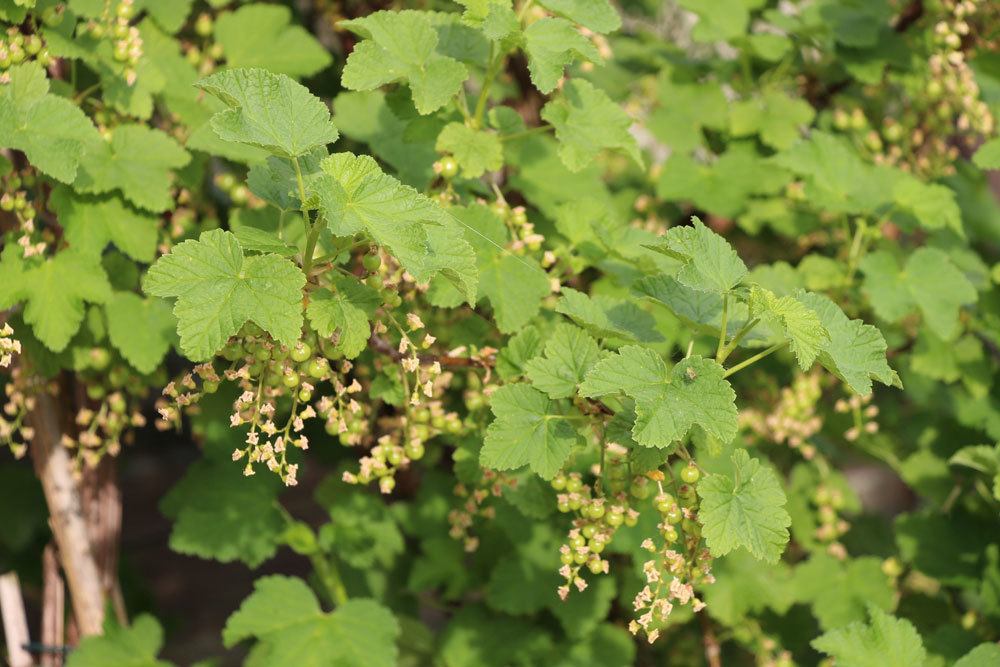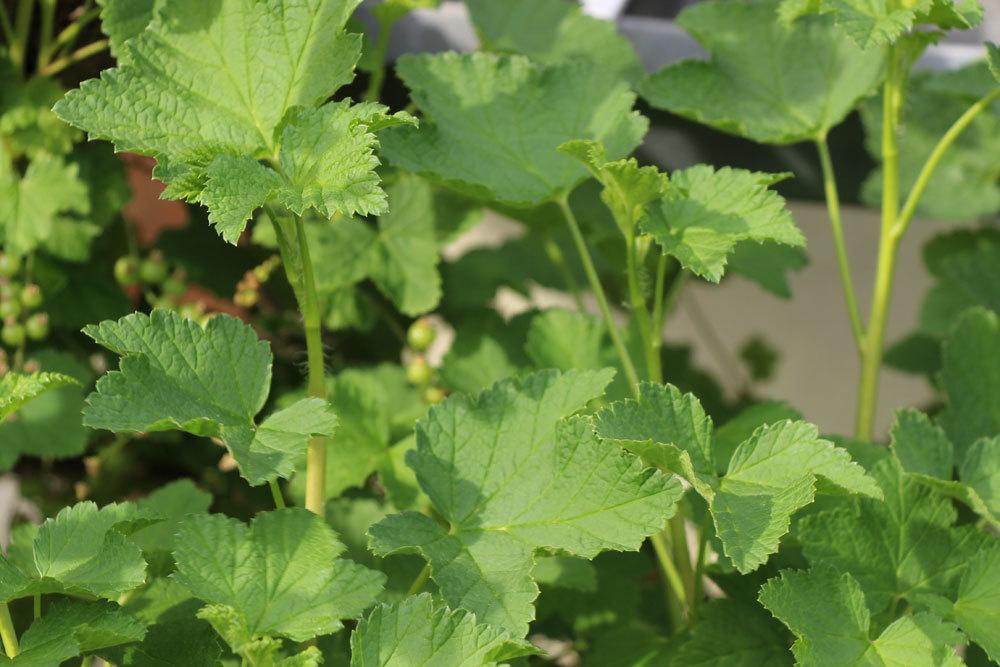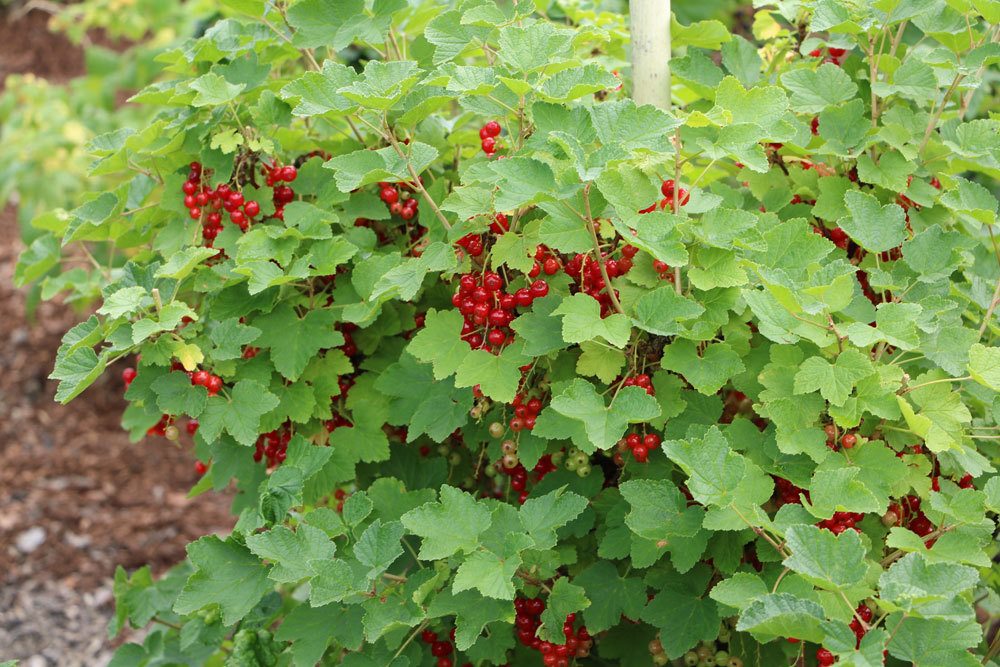The tart fruits of the currant bushes are ideal for processing in the kitchen. Culinary, the vitamin-rich, round berries enhance desserts, cakes and jelly. To enjoy a bountiful harvest, passionate gardeners should take into account a few relevant facts in the care. Regular pruning increases the annual yield of the popular currants. The different varieties of the woody plants make different demands on the amateur gardener when pruning.
Garden classic
Currants are one of the classics among the domestic berry bushes. This is shown by the fact alone that in Europe, Austria and Switzerland there are various dialect names for the plant and its tart berries. In addition to terms such as “Ahlbeere”, “Träuble”, “Ribiseln” or “Meertrübeli”, there is one point that distinguishes the varieties of gooseberry: The issue of “pruning”. Black currants are pruned in a different way than red and white berry bushes.
Pruning
Pruning of deciduous woody plants is indispensable for a profitable season. As a rule, this measure is carried out immediately after harvesting. In the case of early ripening berries or strongly growing specimens, pruning is sometimes advisable even before the berries are harvested. It does not matter whether the plants are cultivated as high stems or as bushes. Red currants can be easily grown as spindle and multiple shoots on a wire netting.
Tool
The right tool
Passionate hobbyists know how important the right tools are. This also applies to gardening activities: well-sharpened and functional tools make work easier and contribute to effective pruning. To prune berry bushes, you’ll need the following.
- Pruning shears
- Hand shears
- jigsaw or folding saw
- Gloves
Saws and loppers are used inside the bush or on stronger shoots. With little effort, it is possible to quickly remove the offending plant parts. The cut should be clean, so that no disease germs or fungal pathogens can get inside the currants. This measure applies to any pruning, regardless of whether you cut berry bushes, deciduous or coniferous trees. For this reason, it is additionally advisable to disinfect the tools after work. The smaller hand shears are suitable for fine work. Shoots only a few millimeters thick can be effortlessly cut away with them.

Power tools can facilitate the care or pruning of plants. However, hedge trimmers of this type are not suitable for berry bushes. Refrain from using these tools.
Timing
Whether early or late-bearing varieties: If you thin out shrubs after harvest, it will increase the health and vigor of the woody plants. Sunlight reaches the ripening fruit unfiltered, and harvesting is made easier at the same time.
- in the spring after the frost, high trunk currant can be cut back
- immediately after harvesting shorten old shoots
- remove dead and wilted parts of the plant throughout the year.

Frost and excessive heat can do tremendous damage to hardy perennial woody plants. At least if the plants have been weakened by pruning back and thinning.
- cut late-bearing varieties before the first frost
- do not cut the shoots in the midday sun
- cut back the currants in the early or late afternoon
Even before new shoots and buds form in spring, you should trim dead branches close to the trunk or ground. By doing this, you will make room for new branches and berries. Fast and strong growing varieties, such as “Silvergieters Black”, quickly recover from this measure. Gloves are by no means mandatory, but an indispensable utensil for gardening. The focus is not only on protecting people, but also plants. Just like the tool, the gardener can spread germs and pathogens in the garden. For this reason, never touch the fresh cut surface of woody plants with your bare hand.
Pruning
After planting
Pruning or removing shoots immediately after planting is only necessary for the spindle or hedge form. For the single-shoot upbringing on the wire frame, several plants are planted at a minimum distance of about 35 cm. If you choose the two- to three-shoot variety, you should maintain a distance of at least 75 cm between individual currant bushes. This form of cultivation is especially suitable for mounds and raised beds.

- in the case of single-shoot upbringing, spare only the leading shoot
- shorten disturbing side shoots directly after planting
- leave 6 to 8 one-year-old shoots in the case of multi-shoot spindle training
- remove parts of the plant sprouting on the ground or on the side several times a year.
In other forms of education, remove dead or weak shoots. Shorten the tips of healthy plant parts by about 3 to 5 cm. This promotes bushy growth.
Prune back white and red varieties
Unlike black currants, red and white currants form their tart-tasting fruit on two- to three-year-old shoots. From the 4th year, the yield on these branches decreases. Annual pruning is necessary to replace the older shoots with young ground shoots. In blackcurrants, it is the one-year-old shoots that guarantee a high-yield harvest. Older branches can be removed here without hesitation, provided that it does not affect the statics of the entire plant.
Currants with a relatively weak growth should be cut back annually by about one third. There must be a balance of young and perennial shoots. For shrubs with red and white berries, heed the following tips.
- remove older shoots at the base of the shrub
- leave 10 to 12 main branches
- prune tightly standing branches

Older shoots are often thick and woody at the base. If necessary, use a saw to cleanly cut away the branches. You can “rejuvenate” red and white varieties with a trick: Grow a new ground shoot in time to completely replace the old main shoot in the third or fourth year. In this way, you prevent the yield of berries from noticeably decreasing and the entire plant from “aging”. You can recognize older shoots by their dark bark coloration. The best-known red and white Ribes varieties include, for example.
Ribes Rubrum Macosta
medium-late ripening woody plant with aromatic berries
Ribes Rubrum Rondom
an aromatic variety that bears from the end of June
vigorous growth and optimal for hedge cultivation
Ribes Rubrum Jonkheer van Tets
the strong growth characterizes this early currant variety
Ribes Rubrum Junifer
this plant is sensitive to frost
blooms already from March
Ribes Rubrum Champagne
medium-early flowering woody plant
the berries have a light, champagne aroma
Ribes Rubrum Blanka
medium early bearing variety
high-yielding currant variety

- Black berries
- Pruning black currants
In woody plants with black berries, the yield on older shoots decreases noticeably already from the 2nd year. The disadvantage: the older branches unnecessarily rob the currant of a lot of strength and energy. If the bush is not pruned back and thinned out annually, lack of light can also lead to a low harvest. Make room for the young shoots by removing the older ones immediately after harvest. It is also important to pay attention to the appearance or statics of black berry plants. At least 10 to 12 branches should be retained on the shrub, which will hold the shrub together.
To promote a bushy appearance, you can resort to a trick: Leave only 3 to 4 side shoots and completely cut back the main shoots beyond that. About 4 to 6 eyes are enough for the plant to resprout vigorously. The branches that appear the following year will produce more fruit. It is not at all unusual for weak shoots to bend to the ground under the weight of the berries. React in time and support the branch. Among the most famous representatives of black currants are the following.
Ribes nigrum Ometa
variety with aromatic berries
resistant to a wide range of diseases and pests
Ribes nigrum Silvergieters Black
a high-yielding variety with a vigorous, upright habit
sweet and mild berries
Ribes nigrum KieRoyal
the self-pollinated variety has sweet fruits
harvesting takes place from the end of June
Pruning tips
Tips for pruning the perennial woody plants
Thinning and pruning gooseberry plants is not difficult. Regardless of the Ribes variety, there are a few general tips that will result in a delicious and abundant harvest. These include pruning style, for example. Set the saw or shears at an angle. Rainwater or irrigation water can easily collect on straight surfaces, which in the worst case can cause rot. Unclean edges, such as those caused by insufficiently sharpened tools, should be reworked. Do not injure the main shoot. When shortening lateral and transverse shoots, you should leave a small stub.
Optimal shoot lengths for different varieties in spindle training:
- cut back slowly or weakly growing currants to a length between 30 – 50 cm
- medium-weakly growing varieties shorten to 20 – 30 cm
- for strong growing specimens you can cut the branches to a length of 5 – 15 cm
High stems
Fruit varieties grown on high stems have not been uncommon for a long time. The plants take up little space and are an eye-catcher in the garden. In addition, the woody plants can be easily cultivated in larger containers. The trend does not stop at currants. Ribes aureum, the golden currant, is used specifically for this form of cultivation. For high stems, similar rules apply as for bushy gooseberry plants.
- prune upward growing branches
- cut away water sprouts
- remove weak shoots
- prune older, drooping branches
- do not tear branches during pruning
- pay attention to an even crown structure










